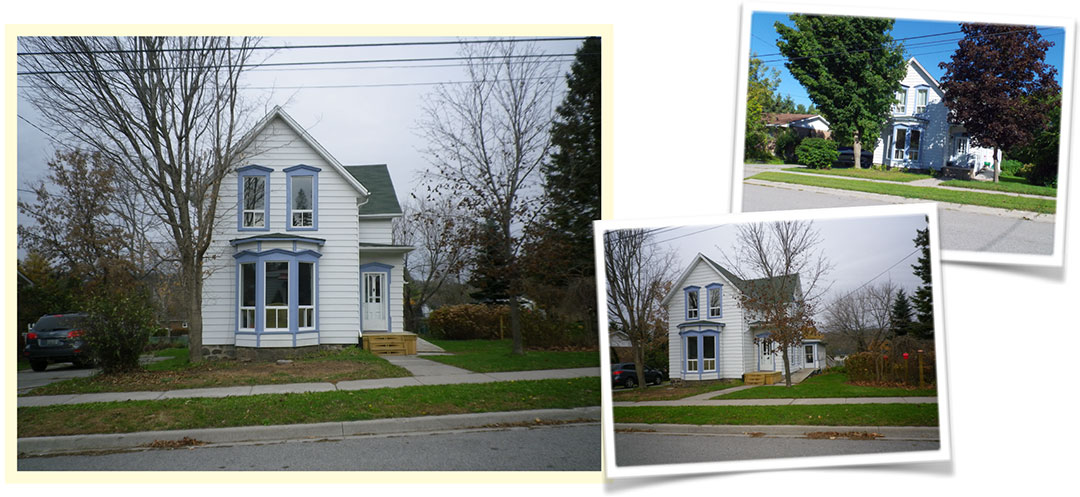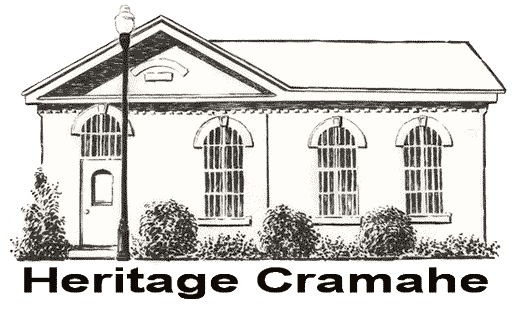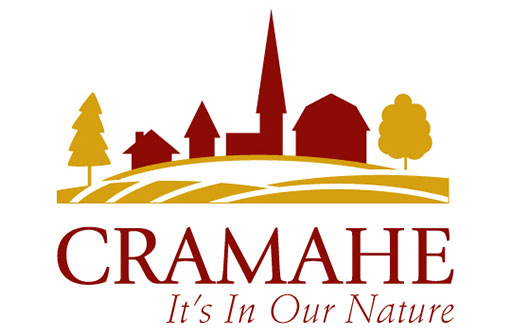40 Church Street West, Colborne
(c.1870s)
Roll No. 1411-012-010-35100 – Cramahe Township Ontario

Folk Victorian
Initially these Folk Victorians were found in remote/rural areas, made of local materials with or without adornment. Later they became very popular and today can be found in rural areas and cities, in every neighbourhood.
The floor plan is usually straight forward with a parlour in front, kitchen in back, and bedrooms upstairs.
The classic Folk Victorian has a tall, square symmetrical shape with a front gable and a side wing which gives it an “L” shape. It has a cross gable roof and often a front porch with spindles and gingerbread and sometimes flat jigsaw trim.
Some properties of this style have a three panel oriel window (on the upper floor level) in the Gothic Style and many others have ground floor three panel bay or bow windows as does this one.
This particular house has the gable end, the “L” shaped wing and part of the “L” has been closed in to create a vestibule and small porch. The window mullions are quite unique and the Tudor shaped hood or drip molds divert water as designed and give the house a charming decorated look without the usual gingerbread.
The colour too adds to the charm of this property.
History or Associative Value
Nathaniel Gaffield, one of the earliest settlers in Cramahe township, acquired 200 acres and probably lived here as early as 1797. He was formally granted the property in 1804 and sold it all to Joseph Keeler (Old Joe) in 1806. The property passed through the Keeler generations and was sold to Joseph Jewell in 1860. Jewell was an English cabinet maker who, according to the censuses, lived in Cramahe from 1851 to 1901. Jewel and his descendants owned the property until 1949
Additional Historical and Genealogical Information
Nathaniel Gaffield (ca. 1755-ca. 1838) (LINK) was the first owner of Concession 2, Lot 32, a 200 acre parcel part of which would later become Reid Lot 127. Lot 32 is bounded on the south by King Street West, and on the north by Orchard and Purdy Roads. On the east it is bounded by the undeveloped road allowance running north from Ontario Street. On the west the southern half of the Lot is bounded by Percy Street. Percy Street angles northwestward in the northern half of Lot 32, and the western edge of the lot is along the line Percy would have taken if it had headed straight north.
Although he had probably lived there since at least 1797, Gaffield wasn’t officially granted Lot 32 until 13 May 1804. He sold it to Joseph Keeler (1763-1839) (LINK) on 23 January 1806.
Keeler transferred the southern third of Concession 2, Lot 32 to his son Joseph Abbott Keeler (1788-1855) (LINK) on 1 January 1824. This was the area now bounded by Ontario Street on the west, Percy Street on the east, and King Street on the south. The northern limit was along the backs of the modern properties along the north side of Park Street.
Over the next 30 years Joseph Abbott Keeler sold off bits and pieces of this land to a variety of people. On 28 September 1854 he transferred most of what was left of his property in this area to his son Joseph Keeler III (1824-1881) (LINK).
Joseph Keeler III continued his father’s tradition of selling off sections of this property. On 24 April 1860 he sold Reid Lot 127 to Joseph Jewell (1829-1906). Jewell was an English cabinet maker who appears in Cramahe censuses from 1851 through 1901. His wife was Margaret McKenzie (1838-?) and they had five children: Frederick J. (1858-?), Amelia Jane (1861-1924), Alice Maud (1863-1936), Joseph (1864-1931), and Ellen (1869-?). Jewell owned the property for the rest of his life, and the next transaction in the Land Records Office is from 1949, so apparently his family continued to own it through the cut-off date of 1921. There is no direct evidence, but since he owned the property for so long, it wouldn’t be surprising if he lived there. He purchased the property in 1860 for $60, so there almost certainly wasn’t a house there then. This would suggest that Joseph Jewell probably built the house.




